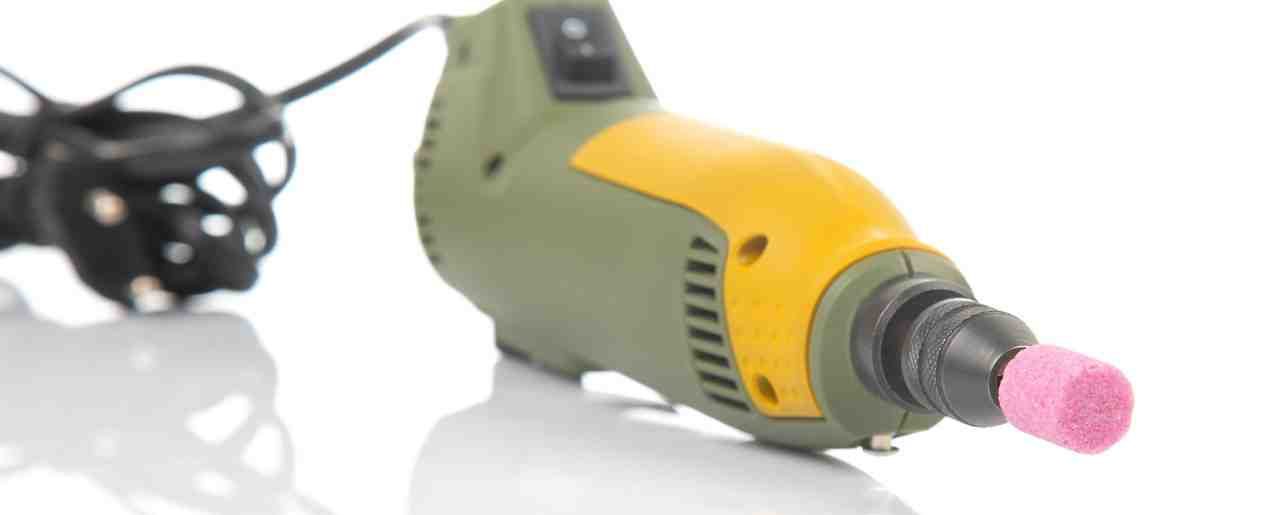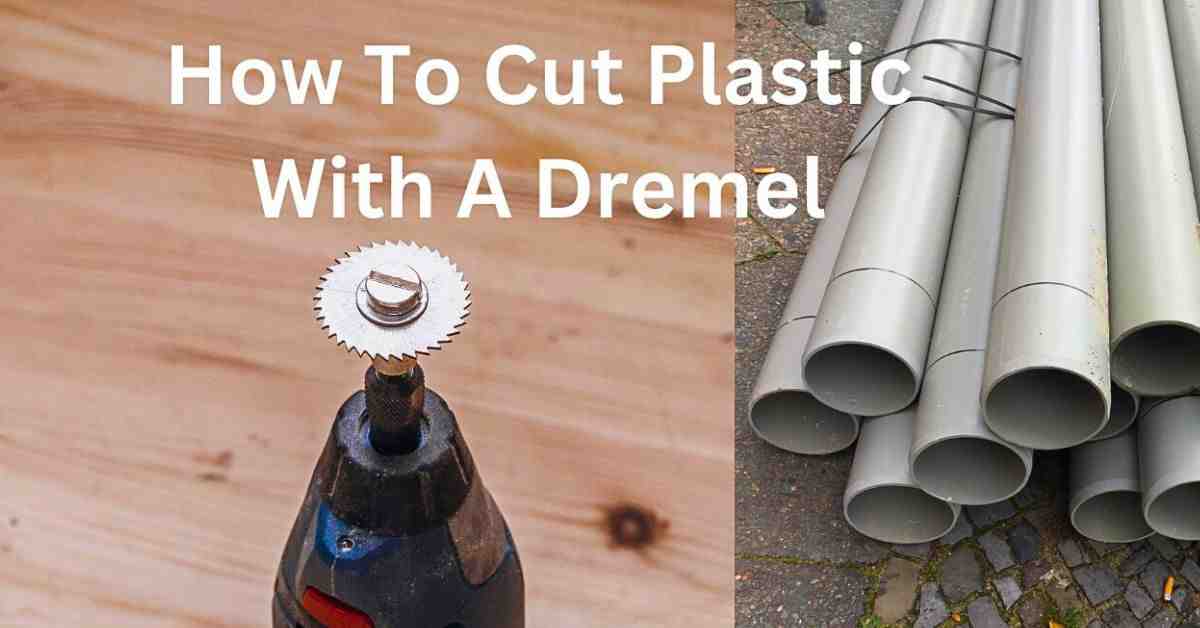Dremel is an effective and versatile tool for cutting, sanding, and shaping a range of materials such as wood, metal, and aluminum. But is it effective when it comes to plastic? Can you cut plastic precisely with a Dremel?
You can cut plastic with Dremel cutting wheel EZ#476, EZ #402 Mandrel, Dremel Multi-Purpose Cutting Bit #561, and Dremel Cutting Wheel SC #456. Keep the speed on 10000-15000 RPM and gently move the cutting disc through the plastic.
In this post, I’ll give a step-by-step guide on how to cut plastic with a Dremel in 15 easy steps. So without spending time on ado, let’s jump to the guideline.

Cutting Plastic With Dremel: 15 Simple Steps
Dremel is a great option for cutting all kinds of plastics. It will even work on hard plastics like polycarbonate. But of course, you will have to go with the right cutting disc and technique.
Along with these, there are other considerable facts while cutting plastic with a Dremel.
Although plastic is a solid material, it begins to melt when it comes into contact with heat. So, while working with plastic, you will have to be patient.

You may have to take several breaks to let the plastic and cutting disc cool down.
Step 1: Taking Safety Precaution
This is the first and most important part. When you work with Dremel or any other electric machines, you must take some basic safety precautions. Here are some safety tips to keep in mind:
- When you start using the Dremel on your plastic, it will produce lots of plastic dust. This will directly go to your lung through inhaling. To prevent these, you will have to use a mask.
- Next, wear protective glasses and full sleeves clothes. Sometimes cutting wheels and bit breaks downs in the middle of the cut. These cutters are extremely sharp. If there is no barrier, these flying particles will directly hit your face and other parts of the body.
- Dremel produces excessive noise while cutting any material. To protect your ear from such annoying noise, use eye buds.
- Avoid loose clothing and jewelry.
- Work in a well-ventilated space.
Step 2: Learn About Different Cutting Wheels and Bits
Dremel has produced several cutting wheels and bits for cutting plastic. But which is the best Dremel plastic cutting bit or wheel?
It’s necessary to learn about different kinds of cutting Dremel attachments because if you use the wrong cutting wheel or bit, it can burn/melt the plastic.
Here’s a table of five mostly used Dremel plastic cutting wheel or bit:
|
No |
Tool Name |
Features |
| 1. | Dremel Cutting Wheel #EZ476 | These wheels are specially made to cut off plastic. Using these discs, you will quickly get a clean and straight cut on your plastic. Easy to change and fits any hard-to-reach corner. |
| 2. | Dremel #EZ402 Mandrel | The EZ-Lock system of this tool makes it easy to cut through a range of materials from metal to plastic. You can use this mandrel for cutting, sanding, and buffing plastic. But this attachment tends to break away from the head too often. |
| 3. | Dremel EZ#728 Cutting Discs | This EZ lock-cutting kit comes with 11 discs. All the cut-off wheels have been specially curated to ensure smooth cuts on plastics and metals. |
| 4. | Dremel Cutting Wheel #SC456 | These cut-off wheels are reinforced with fiberglass. Hence these are ideal for cutting, trimming, and designing a variety of metals, including plastics. You will get a precise cut on your plastic with these cutting wheels. |
| 5. | Dremel Multi-Purpose cutting Bit #561 | This multi-purpose cutting bit works best when it comes to detail cuts. You can cut any plastic material in any shape, circle, square, or triangle with this bit. |
Step 3: Choose The Right Cutting Wheel and Bit
Now you are familiar with several cutting Dremel attachments for cutting plastic. But which one is best for you?
Well, it totally depends on what kind of plastic you are working with and what kind of cut you want.
If you want smooth, thin cuts on your plastic, then Dremel EZ#728 will be the best choice for you. In contrast, the Dremel Multi-Purpose cutting bit #561 is best for detail cuts like circles, squares, or triangles.
However, I recommend cutting wheel #EZ476 because it is specifically made to work on plastics.
Considering all these factors, choose a Dremel attachment that you think will be the best fit for your plastic project.
Step 4: Mark a Bold Line On The Plastic
Once you have chosen the right cutting Dremel attachment, it’s time to measure and mark your plastic. Use a marker or tape to mark the cutting line. This will help you to stay on track while cutting.
Step 5: Secure the Plastic
If you are working on any object that can move while cutting, you have to secure the plastic to avoid any accidents. Here clamp or vice will help you.
Step 6: Attach the Cutting Wheel To The Dremel
Now lighten the collet and place the cutting disc in the middle of the Dremel. After inserting the disc, hand-tight the collet so that it doesn’t come out while working.
Step 7: Turn On the Dremel
Connect the Dremel to a power socket and turn it on.
Step 8: Adjust the Speed
You will have to adjust the speed of the Dremel according to the type of plastic. For instance, you can cut a thin piece of plastic at 10000 RPM. But this speed won’t work on a thick plastic object.
Generally, 10000-15000 RPM is perfect for cutting off any kind of plastic. Do not cross this speed limit, or your plastic may burn or melt due to excess heat produced.
Step 9: Start Cutting
Take the Dremel and start cutting the plastic from the starting point of your mark. Keep your hand slow and steady. Go slow, applying gentle pressure. You may need to do multiple passes as you can’t apply hard pressure on plastic.
Don’t apply extra pressure to finish the cut quickly. It will break your expensive cutting wheel in a second.
Step 10: Take Breaks to Let the Plastic and Dremel Cool Down
No matter which material you are working with, it’s steel, wood, or plastic, Dremel will produce heat while cutting. Though this friction or heat is not a concern for other materials, it is an issue when it comes to plastic.
Plastic starts to melt when it comes in contact with heat. So you will have to take frequent breaks while cutting plastic. This will let the cutting disc and the plastic cool down.
Step 11: Remove the Cutting Wheel or Bit
After finishing the cut, power off the Dremel. Don’t use the plastic or the cutting wheel immediately. After a while, remove the cutting wheel.
Step 12: Insert A Sanding Attachment
After the cut, you will notice an unparalleled, rough edge. To smoothen these edges, insert a sanding attachment. Dremel 411 Sanding Disc is a great option. You can also use sanding paper or grinding stone.
Step 13: Use the Dremel to Smoothen the Edges
Now use the attachment to smoothen the edges of the plastic.
Step 14: Clean Up Any Plastic Debris
Because of the cutting and sanding process, there will be lots of plastic debris. Use a brush or vacuum to clean the mess. Don’t forget the tricky corner of the cutting disc.
Step 15: Store the Dremel and Cutting Attachments Properly
The durability of any tool depends on maintenance. To longer the lifespan of your favorite rotary tool, make sure you properly clean and store the Dremel and its attachments after every use.
Frequently Asked Questions
Which Is the Best Dremel Disc For Cutting Plastic?
Dremel cutting wheel EZ 476 is the best disc for cutting plastic. With these wheels, you will get smooth and quick cuts on all types of plastic. This EZ lock tool is specifically made to work on plastics.
Can I Cut Thick and Hard Plastic With A Dremel?
You can cut 1.1-inch thick plastic with a Dremel. To cover this area, you will have to cut the plastic piece from both sides.
However, you can easily cut hard plastics such as polycarbonate, nylon, ABS and Plexiglas with a Dremel. Dremel cutting disc EZ 476 will be the best option for such tasks.
Conclusion
By following the process above, you can easily learn how to cut plastic with a Dremel. You can cut almost all types of plastics, even hardened ones such as polycarbonate, nylon, ABS, and Plexiglas.
Remember to wear eye, nose, and ear protection while using Dremel. Always work in a well-ventilated area. Do not exceed the instructed speed limit, or else your plastic will melt.
However, with little practice and the right working process, you can achieve clean and precise cuts on plastic with your favorite rotary tool Dremel.
- 2×6 or 2×8 Sill Plate (Which One is Better for Foundation) - September 3, 2023
- Sill Plate vs Bottom Plate (What’s the Difference) - August 31, 2023
- Craftsman Chainsaw Carburetor Diagram (2023) - June 12, 2023
